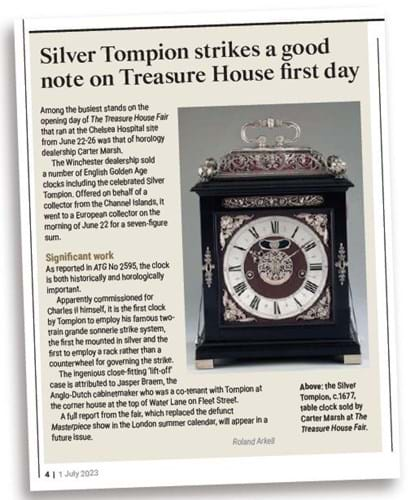An hour after doors to the inaugural edition of The Treasure House Fair opened, Brussels gallery Patrick & Ondine Mestdagh sold a Tongan barkcloth tapa priced between €25,000-50,000. Such business helped paint a positive picture of the event which ran from June 22-26 at Royal Chelsea Hospital.
Sales are always welcome, of course, but the Mestdagh tapa and other transactions also went some way to answering questions about the potential of the new fair left by the disappearance of its predecessor Masterpiece: can London still support a major summer fair? Can the UK still foster international trade in the wake of Brexit? And with costs rising, is the outlay for a fair worth it for exhibitors and organisers?
Patrick Mestdagh, who refused to be put off by Brexit’s logistical red tape, planned to return to London for Masterpiece before the fair was scrapped in January. When Treasure House was announced the following month, he was among more than 50 who signed up to take part. His stand celebrated tribal art for its timelessness as well as its specific cultural qualities and his other sales included an Aceh tribe shield from Sumatra, Indonesia, priced at €25,000-50,000. It went to “a loyal customer”.
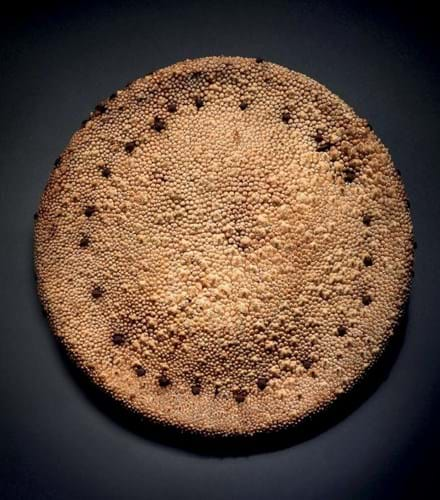
Aceh tribe shield from Sumatra, Indonesia, sold with an asking price of €25,000-50,000 by Patrick & Ondine Mestdagh.
According to Mestdagh the “test is passed”. He praised the quality of the exhibitors and the buyers at the fair and plans to return next year (dates for next year, as advertised in bold letters at the fair’s exit, are already set for June 26-July 2).
As with any infant event, there were teething troubles. Like nearly every dealer that spoke to ATG, Mestdagh found that footfall was lighter than he had hoped for. “No doubt the 2024 edition, with a gently enlarged group of exhibitors and real marketing work through the year will guarantee a real success to the second edition of the fair,” he said.
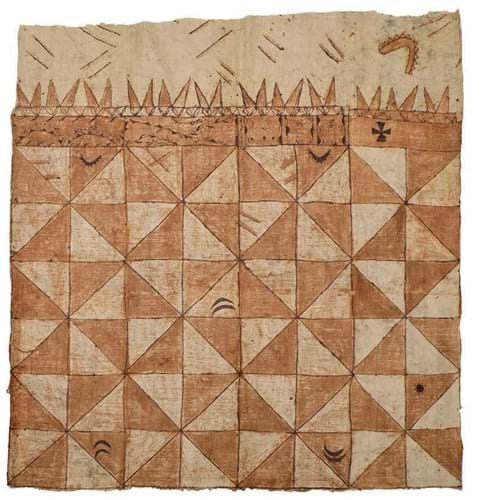
Tongan barkcloth tapa sold by Patrick & Ondine Mestdagh with an asking price of €25,000-50,000 at The Treasure House Fair.
The test may be more in the second edition than in this year’s. It is crucial to remember that doors opened to The Treasure House Fair only four and a half months after it was first announced – which was only a week or so after it was conceived. Working at breakneck pace, founders Thomas Woodham-Smith and Harry Van der Hoorn of Stabilo (the fair building company) had some advantages, however. They were part of the team that first devised Masterpiece in 2009-10 and they staged it essentially when and where the former fair was to have run this year.
Chutzpah and experience on the part of the organisers coupled with a true desire on the part of dealers not to lose an annual summer showcase led to an event that was better than many hoped.
“We were very pleased indeed,” said Jamie Rountree of Rountree Tryon. “The fair looked great, and it was just brilliant to have a summer art fair in London. For me it was the equivalent of The Winter Show in New York, excellent quality of client and just generally the focus being solely on the fine art and antiques.”
Quality control
The calibre and seriousness of the offerings was widely acknowledged and praised. Several exhibitors mentioned that there were none of the – say it with a glower – ‘filler’ galleries that can sneak into the periphery at larger events (think of slick Contemporary firms offering oversaturated pictures).
These choice offerings gave rise to many sales. A highlight was the 17th century Silver Tompion clock commissioned by Charles II, which went for £4.5m from the stand of Carter Marsh (see ATG No 2599).
Releasing this as part of a larger collection of top-quality clocks presented at the fair, the gallery proved that the fair model can be potent when used correctly. Director Darrell Dipper said that “several collectors in both England and America were very disappointed” when the “once-in-a-lifetime” clock went to a new European client.
Other notable horology sales were made at Somlo London, which parted with some 17th century watches as well as two Patek Philippes at prices ranging from £50,000-100,000.
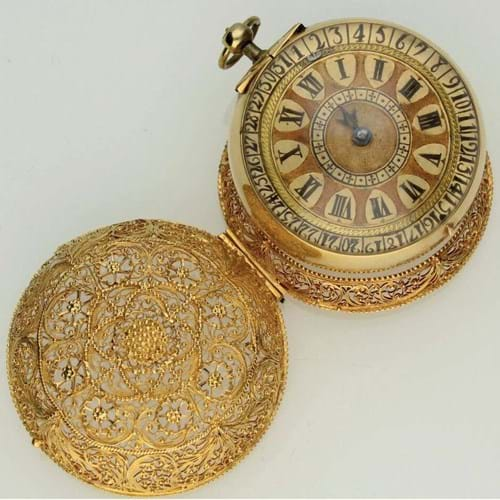
Henricus Harper, London, 1670 Verge watch, one of a number of watches old by Somlo London at prices ranging from £50,000-100,000.
Elsewhere at the event a bronze of a rhinoceros by Rembrandt Bugatti (1884-1916) sold at Sladmore for $2m.
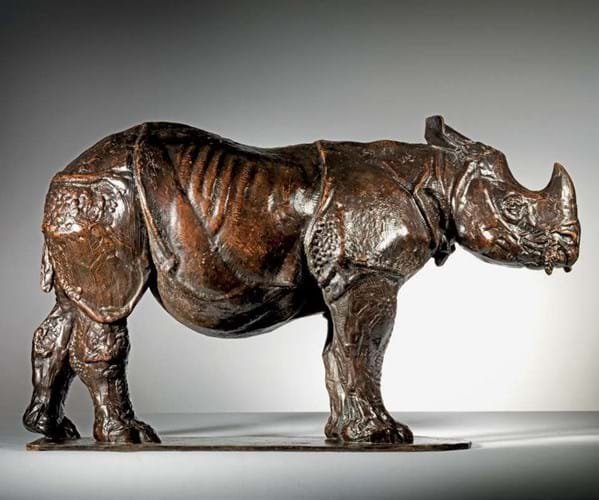
Three-year-old Rhinoceros, 1909-1910, Rembrandt Bugatti (Italian, 1884-1916), Bronze, height: 16in (41cm), sold for $2m by Sladmore.
Also faring well in art was Christopher Kingzett, who found new homes for seven works priced from £10,000-100,000 including those by David Hockney, Keith Vaughan and Laura Knight.
Long-Sharp Gallery from the US sold nearly a dozen early drawings by Andy Warhol which went to collections from Chelsea to Australia. Another antipodean buyer went for a picture by Mildred Bendall (1891-1977), a pupil of Matisse, which Whitford Fine Art sold for around £18,000-20,000.
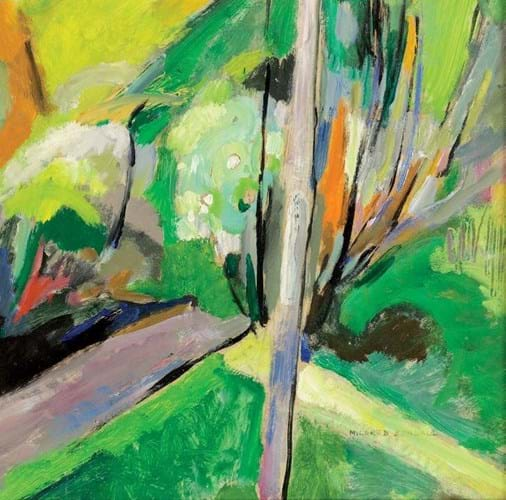
Mildred Bendall (1891-1977), The Country Path, c.1935, signed lower right, oil on paper laid on panel, 14 x 18in (36 x 46cm), sold by Whitford Fine Art for around £18,000-20,000.
Osborne Samuel sold three works by Lynn Chadwick, a David Bomberg and a Reg Butler at prices ranging from £50,000 to six figures.
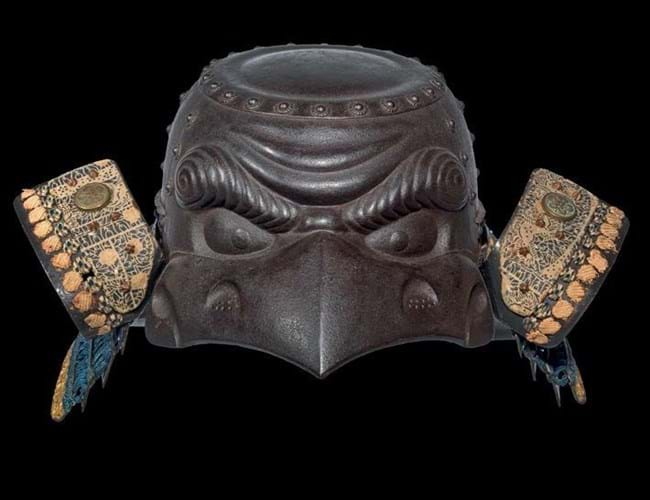
Kawari Kabuto, signed Myōchin Ki Yoshisuke, second half of the 18th century, 16 x 14in (41.5 x 35.5cm), sold by Sydney L Moss.
Meanwhile, Chinese and Japanese art firm Sydney L Moss found a new home for a kawari kabuto or transformed helmet made to resemble the head of a tengu, a mythical being. Created in the second half of the 18th century, it was signed by Myochin Ki Yoshisuke and sold to a new European client for £36,500.
Other Asian art sales included a ceramic vase by artist Chu The-Chun (1920-2014) which was offered by 3812 Gallery for £130,000 and went to a new buyer, while Michael Goedhuis sold four works of Contemporary Chinese art for $5000-45,000 each.
Sales were also reported in furniture with Ronald Phillips selling a Chippendale silver table to a client in the US, Godson & Coles parting with a suite of late 18th-century furniture on opening night and a 12-fold coromandel lacquer screen going from the stand of Butchoff Antiques.
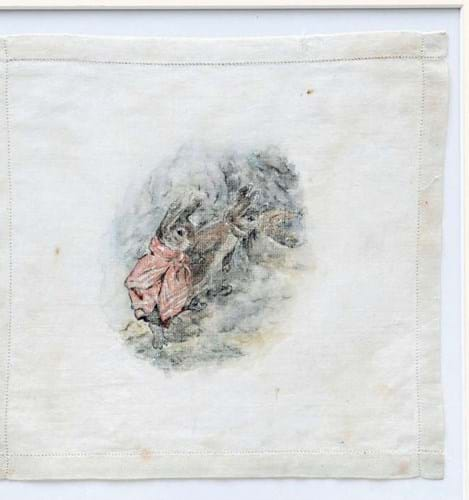
Peter Harrington included this Beatrix Potter original artwork with an asking price of £17,500 among several five-figure sales on the preview night.
Some exhibitors did not complete any sales at the event. That does not always spell disaster.
For many dealers, exhibiting carries publicity and networking benefits that can be almost as important as the sales sheet.
Rountree Tryon, which brimmed with positivity at the end, finalised no sales before doors closed, but left with 11 out of its 24 pictures under negotiation with interest from old and new clients.
Included in these was its highlight offering, a pair of paintings by George Stubbs (1724-1806).
Daniel Crouch of Daniel Crouch Rare Books also recorded no sales and chalked it up in part to the low attendance. He congratulated organisers on the speed at which they put the show together, thereby ensuring the time and place for future such fairs. However, his views on continuing were mixed.
He said: “For many dealers in the furniture and decorative arts markets, this summer fair is their only remaining high-quality fair offering in the UK. I can appreciate, therefore, why many are keen on its survival.
“For those of us permitted to exhibit at Frieze Masters, the decision as to whether to exhibit next year will, however, rest on whether they get rid of the silly name and the atrocious carpet.”
European unions
For all would-be exhibitors there will be other considerations to take into account.
One is the potential of the fair to foster trade between the UK and Europe. Masterpiece cited challenges around Brexit as one of its reasons for shuttering. Treasure House has made clear its commitment to European exhibitors bringing in the likes of Univers du Bronze of Paris and Galerie Gmuzynska from Zurich as well as those from further afield (such as Geoffrey Diner and Michele Beiny from the US).
The early signs were small but promising with dealers such as Mestdagh going home happy. The event also attracted European buyers, notably the one who bagged the Silver Tompion.
Masterpiece also cited rising costs as a reason to close. But for organisers and dealers, the outlay was at least worth chancing. Treasure House went ahead with stand costs per square foot at roughly the same level as its predecessor would have run at this year according to one dealer involved in both. The fact that the fair itself and many participants have committed to returning, even at this early stage, is promising.
Jamie Anderson of Portland Gallery was still mulling over the results of the fair when contacted by ATG. Selling on his stand were an Edward Seago (1910-74) of Norfolk and a large David Spiller painting to a new young collector.
Though he thought the number of international visitors could have been better, he added: “The Treasure House Fair has filled the gap left by Masterpiece remarkably well given the very short period of time the organisers had. The event has a great deal of potential.”
One change that is likely to take place next year is the number of exhibitors. Organiser Woodham-Smith says that they will take on more only “if the right exhibitors come forward” and that it won’t expand beyond 3500 sq metres of exhibition space (it is around 2500 now). That’s about 10 more dealers with the possibility of several more depending on stand sizes.
According to organiser Van der Hoorn, London in June is still a destination for collectors worldwide. He adds: “I am committed to carefully supporting and nurturing this fair long into the future.”



